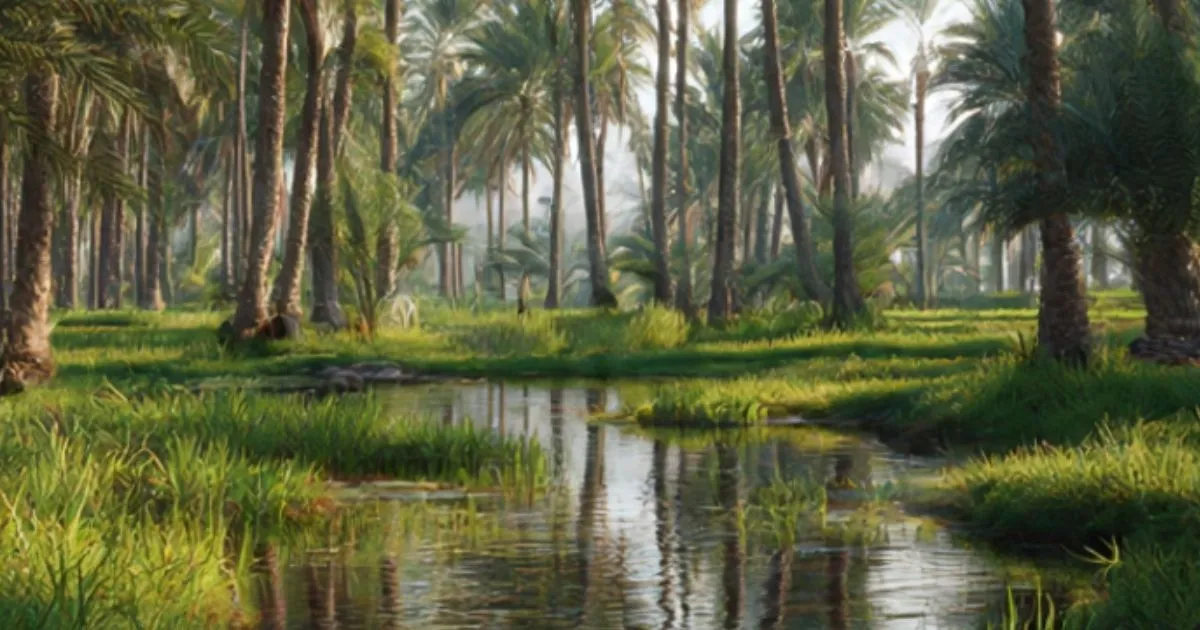Visit Mazra’at Al-Juz’, Medina’s Hidden Gem
Table of Contents
Reasons to Visit Mazra’at Al-Juz’, Medina’s Hidden Gem
Mazra’at Al-Juz’ represents a unique and often-overlooked chapter in the story of early Islam. More than just a picturesque agricultural plot, it is a meticulously preserved historical landscape that sits at the very crossroads of the Prophet Muhammad’s (peace be upon him) arrival in Medina. This article provides a comprehensive guide to understanding its profound significance, exploring its features, and planning your visit to this blessed ground where the history of the Muslim community, or Ummah, was born. Google Maps Location
The Historic Heart of Mazra’at Al-Juz’
To understand Mazra’at Al-Juz’ is to understand the geography of revelation and migration. This historic farm, belonging to the noble Al-Rifai family (descendants of the Prophet, known as the Ahl al-Bayt), is not a random location. Its strategic placement between the Quba and Al-Jumu’ah mosques marks it as part of the original fabric of Yathrib, the city that would become Al-Madinah Al-Munawwarah .
- The Oasis Ecosystem: The farm is a classic example of the Hejazi oasis environment that sustained life in the region. The presence of dense palm groves (nakhl), cultivated fields (mazra’ah), and, most importantly, a water well (bir) demonstrates a self-sustaining community. The well at Mazra’at Al-Juz’ is not merely a source of water; it is a historic landmark. The ongoing maintenance around it underscores its importance as a primary water source for the original inhabitants, a vital resource that determined settlement patterns in ancient Arabia. The gentle flow of water through its ancient channels (qanawat) adds an auditory layer of tranquility, connecting visitors directly to the timeless rhythm of life in this blessed land.
Walking in the Footsteps of the Prophet at Mazra’at Al-Juz’
The true value of Mazra’at Al-Juz’ lies in its direct connection to the Hijrah (Migration) and the establishment of the first Muslim state. This land was part of the territory of the Banu Al-Najjar clan, specifically the sub-tribes of Banu Salim bin ‘Awf and Banu ‘Amr bin ‘Awf, who were key figures among the Ansar (the Helpers of Medina).
- The First Stop: Quba: Upon his arrival in Medina, the Prophet (pbuh) did not proceed directly to the city center. He first stopped in the area of Quba, which was inhabited by Banu ‘Amr bin ‘Awf. He resided with them for 14 days, and during this pivotal period, he personally participated in the construction of the first mosque in Islam, Masjid Quba. The Qur’an itself honors this mosque in Surah At-Tawbah (9:108), referring to it as a “mosque founded on righteousness from the first day.”
- The Path to History: The journey from Quba to the future site of his own mosque and home took the Prophet (pbuh) directly through the lands of Mazra’at Al-Juz’. As he passed through the dwellings of Banu Salim bin ‘Awf on a Friday, the time for the Jumu’ah prayer entered. He descended into the valley of Ranuna’ and led the first-ever Friday congregational prayer in Islam. This event led to the establishment of the nearby Masjid Al-Jumu’ah (The Friday Mosque). Therefore, walking through Mazra’at Al-Juz’ is to traverse the very path where the first Jumu’ah was established.
- Proximity : The farm’s location is not just symbolic; it is practically significant for visitors. Being only 200 meters from Masjid Quba and less than 3 kilometers from the Prophet’s Mosque allows modern-day pilgrims to literally follow in the Prophet’s footsteps. This short distance can be a powerful spiritual walk, reflecting on the journey that shaped the Muslim world.
Spiritual Rewards and Modern Amenities
The connection of Mazra’at Al-Juz’ to the Sunnah of the Prophet (pbuh) extends beyond historical events to ongoing acts of worship.
- The Sunnah of Saturday Visit: The Prophet (pbuh) made it a consistent practice to visit Masjid Quba every Saturday, often riding or walking, to pray two rak’ahs. He explicitly outlined the immense virtue of this act, as narrated in various Hadith collections: “Whoever purifies himself in his house and then comes to the mosque of Quba and prays in it, he will have a reward like that of ‘Umrah.” (Sunan Ibn Majah).
- Modern Conveniences for a Spiritual Journey: Recognizing the desire of visitors to explore these connected sites, a convenient and affordable golf cart service (typically around 10 SAR per person) operates along the route. This allows visitors of all ages and physical abilities to easily travel between the farm, Masjid Quba, and the Prophet’s Mosque. The surrounding area of Quba has been developed to serve visitors, featuring:
- Supermarkets & Pharmacies: For daily necessities and health needs.
- Cafes & Bakeries: Offering a place to rest and refresh, including traditional Arabic coffee.
- Restaurants: Ranging from local Saudi eateries to popular South Asian cuisines, such as the mentioned Pakistani restaurant.
- Gift Shops: Where visitors can find meaningful souvenirs, from dates and prayer mats to Islamic books, often at reasonable prices.
A Timeless Journey Awaits
A visit to Mazra’at Al-Juz’ is a multi-layered experience. It is a journey through a living agricultural museum, a walk along a historic path of prophecy, and an opportunity to engage in a highly rewarded Sunnah. It offers a moment of profound reflection away from the more crowded central areas, allowing one to connect with the natural environment that welcomed the Prophet (pbuh). For any seeker of knowledge and spirituality, exploring Mazra’at Al-Juz’ provides a deeper, more contextualized understanding of the Hijrah and the birth of the Muslim community in Medina, making the history of Islam feel vividly alive and tangible.

